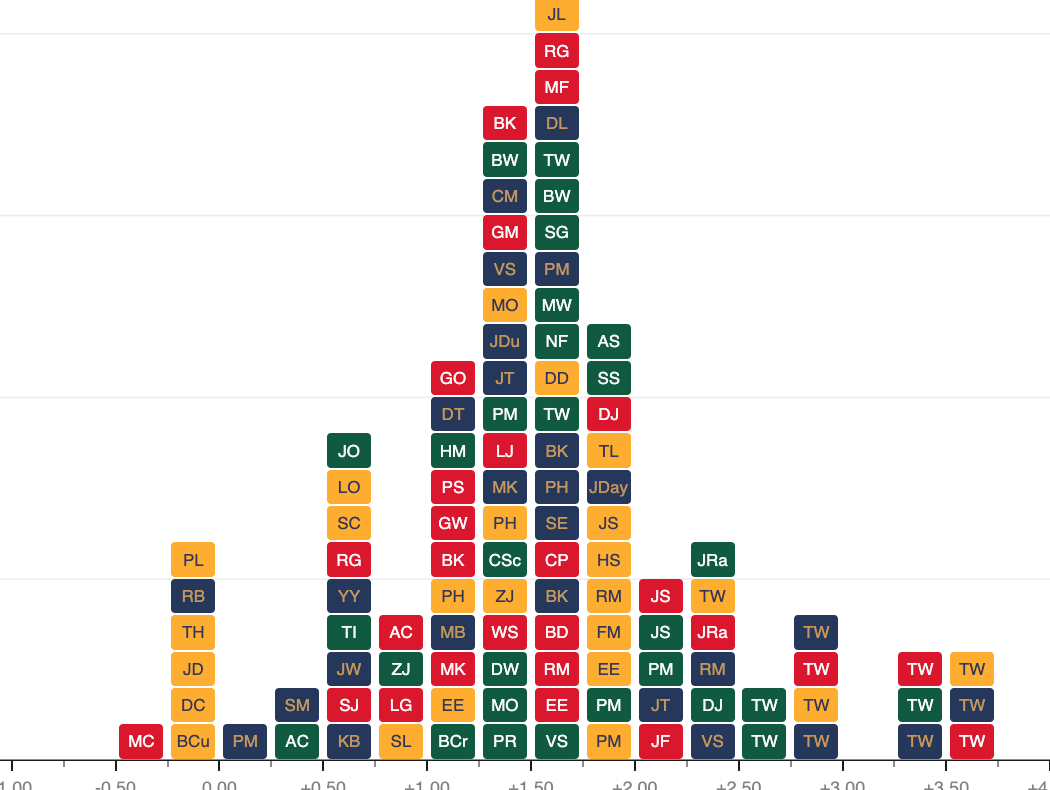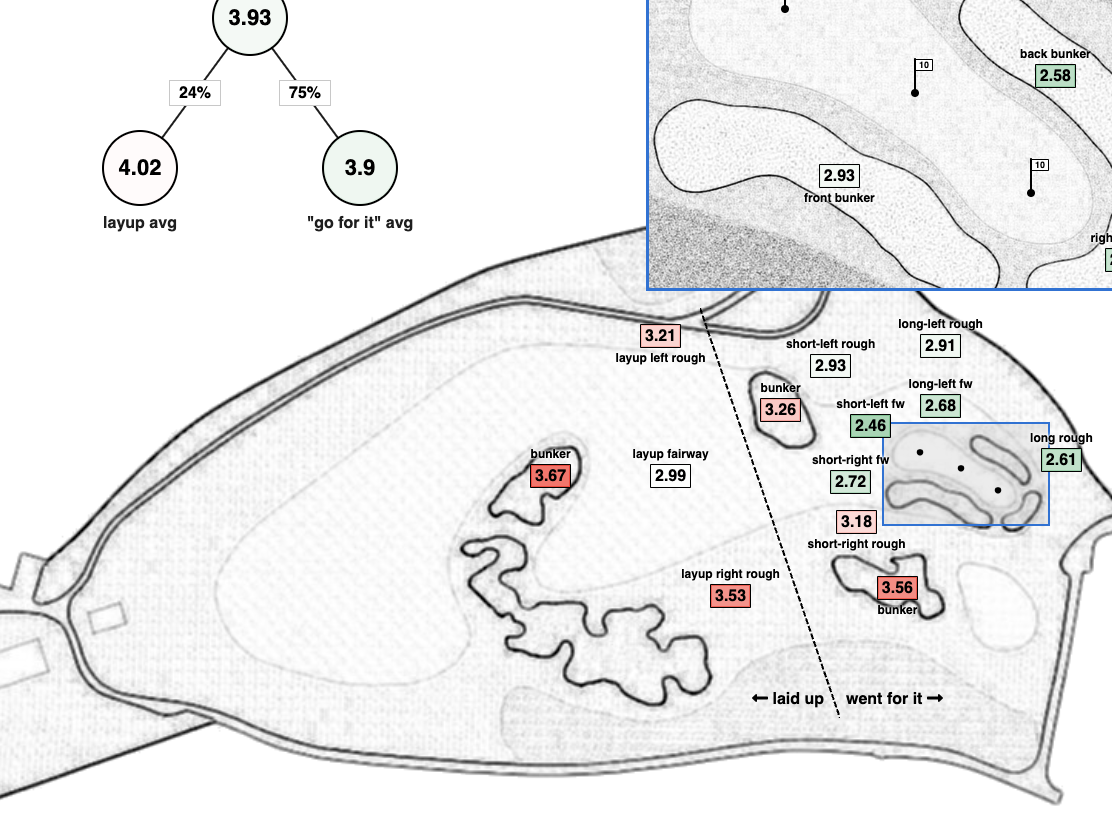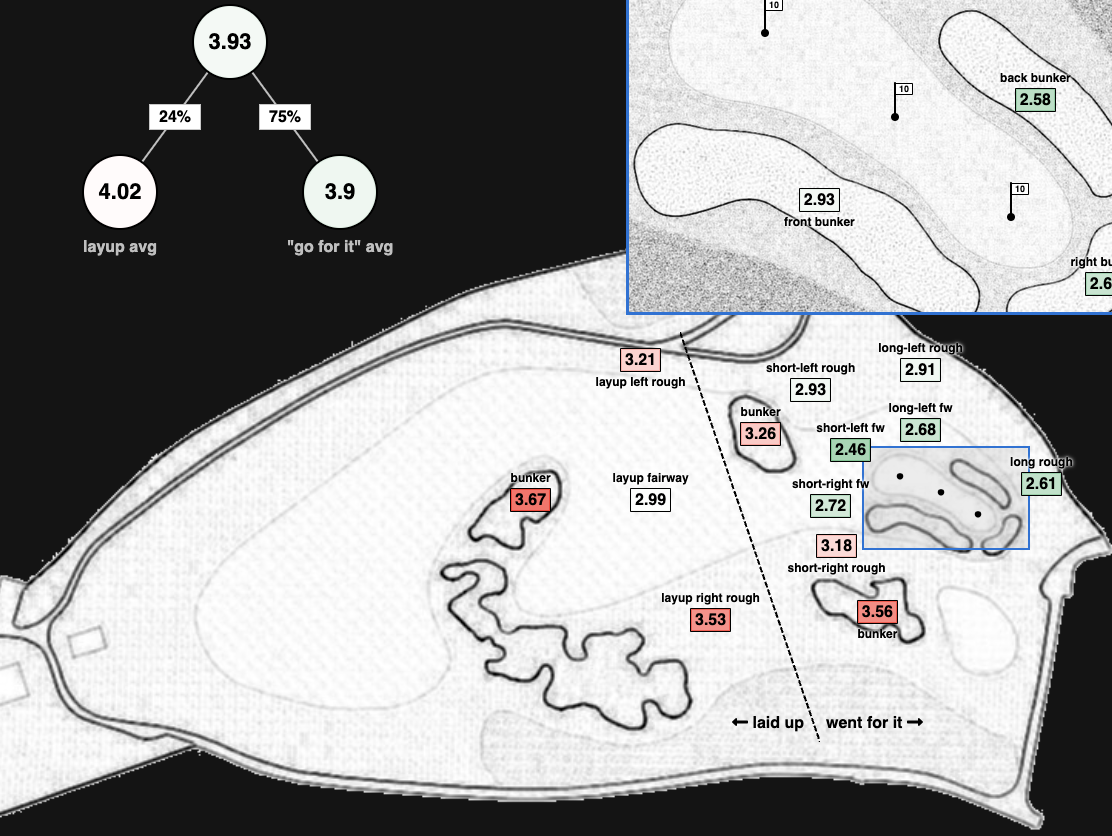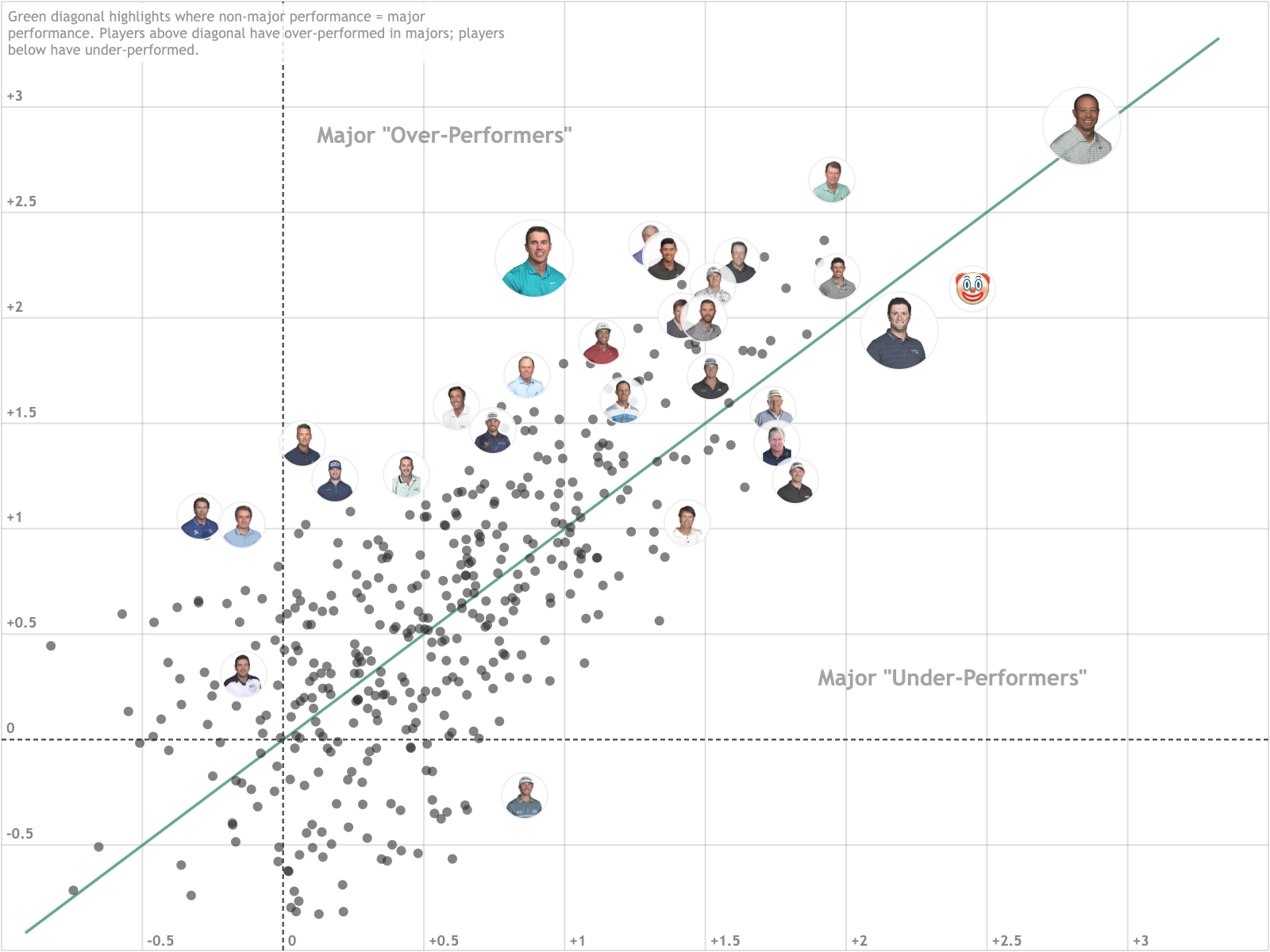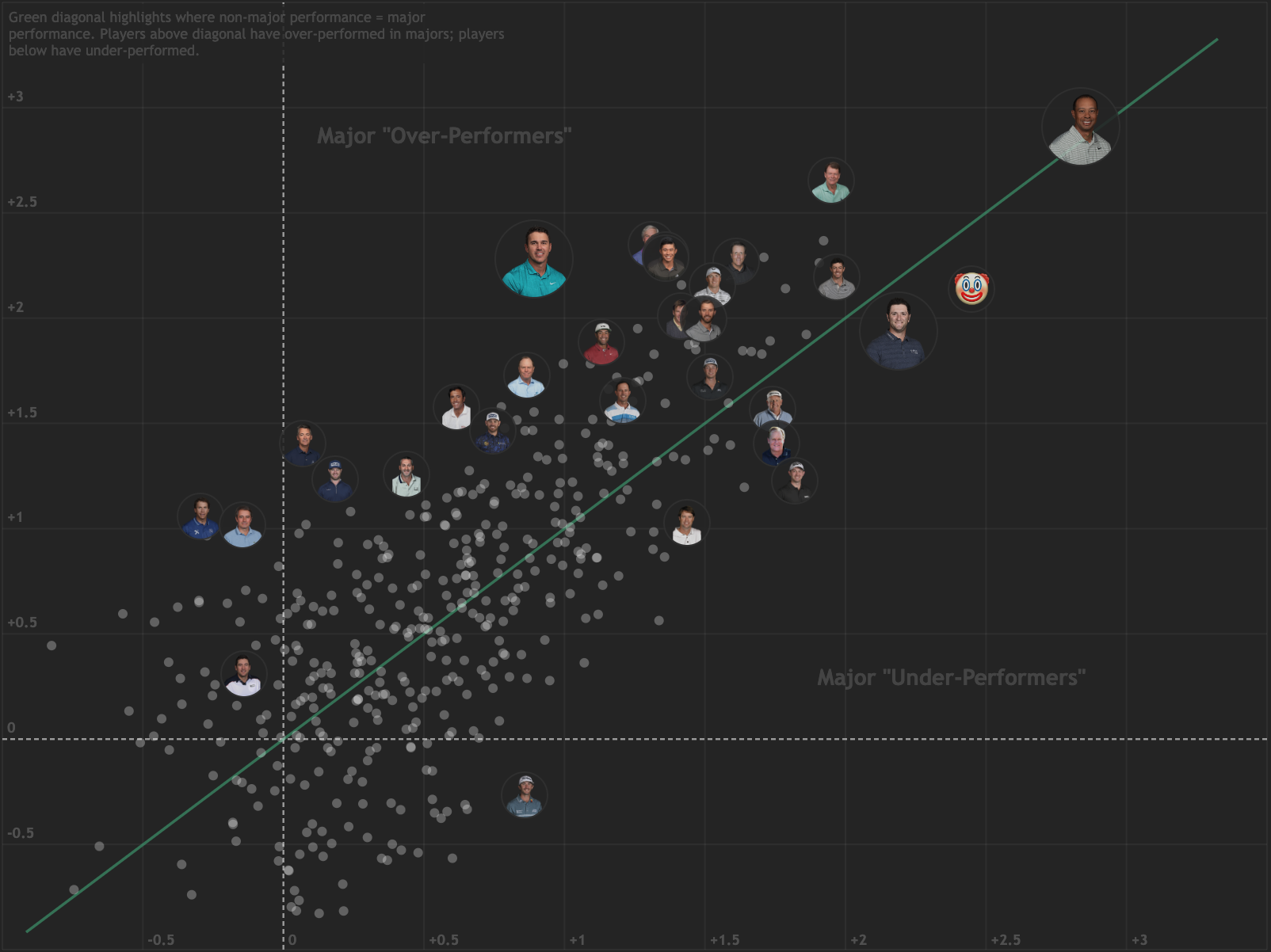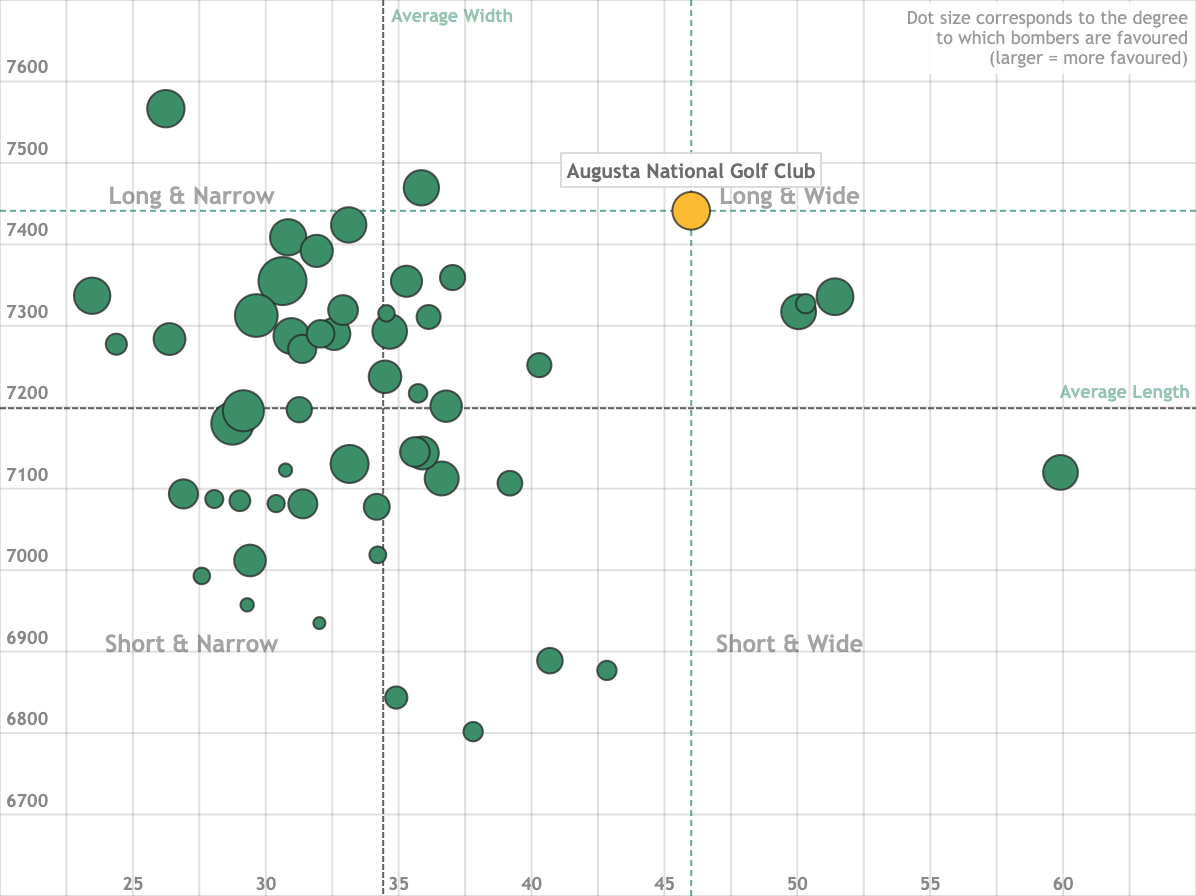
 I.T.N. No. 19
I.T.N. No. 19PUBLISHED March 30, 2020
Inside The Numbers ...
is a brief numerical summary of the current happenings in the world golf, published every Monday — hopefully.
15 GOLFERS
With the small amount of free time the cancellation of the world has afforded us,
we have updated our database of golf scores to include
all the global tours we were previously missing. As a result, this week's update to
the DG rankings is rather interesting.
One such point of interest: among the top 300 golfers
according to our rankings there are 11 golfers who play the majority of their events on the Japan Golf Tour;
in the top 300 according to the Official
World Golf Rankings (OWGR) there are an additional 15 golfers from the Japanese circuit,
for a total of 26. The most glaring omission
from our top 300: Ryo Ishikawa, who is ranked 97th by the OWGR system and 342nd by ours.
9 PROFESSIONAL TOURS
There are now 9 tours represented in the top 300 of our rankings. A player is assigned a
tour based off where they played the majority of their most recent 50 rounds. Shown below
is the top ranked golfer from each represented tour:
PGA: Rory McIlroy — #1 in DG Rankings; #1 in OWGR
European: Tommy Fleetwood — #12; #10
Japan: Shaun Norris — #100; #60
Challenge: Francesco Laporta — #199; #128
Asia: Joohyung Kim — #209; #122
Korn Ferry: Will Zalatoris — #212; #483
Latinoamerica: Augusto Nunez — #214; #348
Sunshine: Thriston Lawrence — #239; #216
Mackenzie: Paul Barjon — #283; #279
PGA: Rory McIlroy — #1 in DG Rankings; #1 in OWGR
European: Tommy Fleetwood — #12; #10
Japan: Shaun Norris — #100; #60
Challenge: Francesco Laporta — #199; #128
Asia: Joohyung Kim — #209; #122
Korn Ferry: Will Zalatoris — #212; #483
Latinoamerica: Augusto Nunez — #214; #348
Sunshine: Thriston Lawrence — #239; #216
Mackenzie: Paul Barjon — #283; #279
8.7 OWGR POINTS
In the 2019 season, we estimated that the average performance in the 12 Mackenzie Tour events was
-2.69 true strokes-gained per round;
in the 9 Asian Tour events (ignoring co-sanctioned events), the average performance was
-2.72 true strokes-gained. Despite having an average performance quality within a rounding error
of each other, the winners of the 9 Asian Tour recieved, on average, 8.7 more OWGR points
than the winners of the 12 Mackenzie Tour events. (Note that there is a 1-to-1 mapping
between first-place points and the overall OWGR point distribution of an event.)
Of all the global tours that make up the OWGR
system, the Mackenzie Tour is treated the most unfairly — according to
our analysis — with respect to their point allocation (the Korn
Ferry Tour is a close second); conversely, the Asian Tour is one of the most favourably treated tours.
1.4 EXPECTED OWGR POINTS
It's worth mentioning that the
purpose of the OWGR is not to provide the most accurate rankings of golfers' skill.
As in other major professional sports, wins are rewarded
disproportionately by golf's ranking system. While this may not be optimal for predicting future performance,
winning is what matters in sport, even if it often
has a large element of luck involved.
However, one feature we do want in a ranking system is for equivalent performances to receive equivalent compensation.
While the OWGR system accomplishes this for the most part, there are some deviations from perfect
fairness (a few of which have been alluded to already).
Using the same model we use to generate our weekly win probabilities, we can estimate the number of OWGR points a certain player (e.g. the average PGA Tour player) would be expected to earn at each OWGR-sanctioned tournament. In a perfectly fair system, the same golfer would be expected to earn an equal number of points at every event. The higher the expected number of points, the more favourable is the overall OWGR point allocation at that event. At the typical full-field PGA Tour event, the average PGA Tour player is expected to earn about 1.4 OWGR points; for the typical full-field European Tour event, this number is about 1.8; at a major championship it's 2.3; at a World Golf Championship event it's 2.7; at a typical Korn Ferry Tour event it's 1.24; and finally, at a typical Japan Tour event it's 2.5.
Using the same model we use to generate our weekly win probabilities, we can estimate the number of OWGR points a certain player (e.g. the average PGA Tour player) would be expected to earn at each OWGR-sanctioned tournament. In a perfectly fair system, the same golfer would be expected to earn an equal number of points at every event. The higher the expected number of points, the more favourable is the overall OWGR point allocation at that event. At the typical full-field PGA Tour event, the average PGA Tour player is expected to earn about 1.4 OWGR points; for the typical full-field European Tour event, this number is about 1.8; at a major championship it's 2.3; at a World Golf Championship event it's 2.7; at a typical Korn Ferry Tour event it's 1.24; and finally, at a typical Japan Tour event it's 2.5.
4.2 EXPECTED OWGR POINTS
Continuing along a similar vein, it's important to note
that the OWGR point allocation at a given tournament can be fair
for certain finish positions and unfair for others. For example,
the winner of the PGA Tour's 30-man TOUR Championship typically receives around
60 OWGR points; this is similar to tournaments like the Phoenix Open and
the Arnold Palmer Invitational. We estimate all three of these tournaments
to be of roughly
similar difficulty to win. Therefore we can say that the point allocation
to the winner of these events is approximately fair.
However, an average PGA Tour player would be expected to earn 4.2 OWGR
points at the TOUR Championship, while they can only expect about 1.5
OWGR points from playing either of the other two events. This indicates that,
not surprisingly, there are far too many OWGR points allocated to the lower
finishing positions at the TOUR Championship — this is a common theme among
limited-field events across all tours.
I.T.N. ARCHIVE
RECOMMENDED BLOGS
Recent Blog Posts
Model Talk Blog
Does our model overvalue leaders?

 Data Visualization Blog
Data Visualization Blog
Skill Distribution of Major Champions
